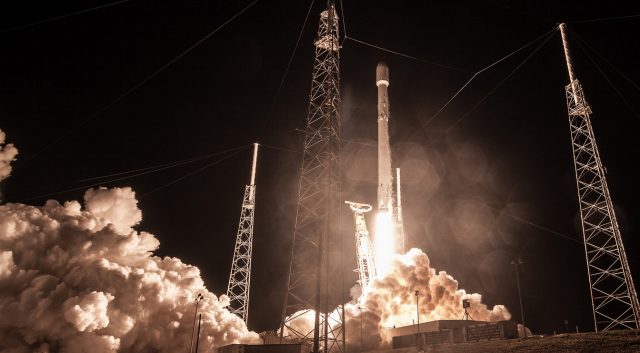
SpaceX usually provides ample details on its launch schedule and the cargo it carries into space. That’s not the case when its cargo is of the top secret variety, and that can leave us guessing about mission details. The recent “Zuma” launch appeared to go off without a hitch, but now there’s reason to think the US spy satellite might have been destroyed before going into operation.
The Falcon 9 carrying this mysterious payload was launched on January 7th from Cape Canaveral Air Force Station. As with all recent SpaceX Falcon 9 launches, the company successfully landed the first stage booster back on land for refurbishment and reuse. That part all went fine, and Elon Musk even shared a long-exposure image showing the rocket’s launch and subsequent landing. If new reports are to be believed, things went sideways after that.
The Falcon 9 is a two-stage vehicle, so the payload was still on its way into orbit when the first stage came back down. All we really know for certain is that the Zuma satellite, built by Northrop Grumman, was destined for low-Earth orbit. That’s fairly simple as space launches go. Sources who have spoken confidentially to news outlets suggest the satellite failed to decouple from the second stage, leading to it either breaking up in the atmosphere or crashing into the ocean. SpaceX built the second stage, obviously, and Northrop Grumman built the coupling mechanism for Zuma.
Northrop Grumman has refused to comment on the multibillion-dollar satellite, which was a highly secretive project for both companies. Even past SpaceX national security payloads pale in comparison to Zuma — we don’t know which government agency was set to use the satellite, let alone what its function was.

SpaceX refused to comment on the fate of Zuma, which isn’t surprising given the super-secret nature of the launch. However, it said the Falcon 9 “performed nominally.” That could indicate the loss of Zuma had to do with Northrop Grumman’s adapter design rather than a failure of SpaceX’s vehicle. This could also be a tricky way of saying the Falcon 9 booster itself worked well, but maybe something went wrong mechanically with the second stage. The government is reportedly still hashing out the details to determine who was at fault. We might never learn who catches the blame, but we may be able to guess if either SpaceX or Northrop Grumman lose a lot of government business in the near future.
SpaceX is continuing on normally for now. It’s preparing several new flights in the coming weeks, including a Falcon Heavy demonstration launch that will take Elon Musk’s personal Tesla into space.

